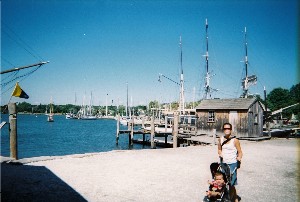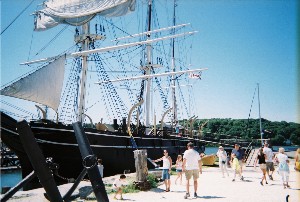Greenmanville Historic District
Mystic Seaport, 75 Greenmanville Avenue

Named for its founders, Greenmanville represents a typical 19th century industrial town with a rich documented history of participation in the movement to abolish slavery. The Greenman brothers founded a shipyard here and became social leaders in the community that grew around it. They contributed to the establishment of a Seventh-Day Baptist church (c. 1851), whose denomination denounced slavery by its covenant. In 1852, the church hosted Lucy Stone, a famous Anti-Slavery Society and women’s rights leader for a lecture, when no other churches in the area would allow her to speak. The brothers also donated to antislavery causes and ran for local offices on antislavery platforms. Oral tradition places the Greek Revival-style home (c. 1839) of George Greenman (1805-1891) as a stop on the Underground Railroad. Many of the Greenmanville buildings are open to the public with regular admission to the Mystic Seaport.

I said it in my Mystic Seaport report, this place is simply great. Certainly one of the best places to spend a day in Connecticut. I just had to rely on an overpriced 24 exposure piece of crap disposable camera for my pictures that day.
![]()
CTMQ’s Underground Railroad Trail page
CTMQ’s Freedom Trail page

Leave a Reply